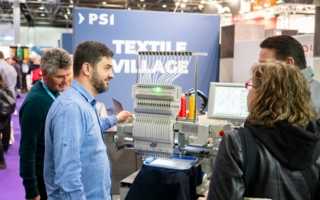21/05/2015 — auf Deutsch lesen
Roz McGuinness, Divisional Director, Fespa
Roz McGuinness: Exhibitors confirmed so far include Fespa Fabric Corporate Partner Kornit Digital, as well as d.gen, M&R, Stahls and many more. Visitors will be able to see the latest in apparel decoration technology from direct-to-garment print to screen print, inks and transfer equipment and roll to roll textile print machines.
Roz McGuinness: Digital technology and the supporting substrates and inks are revolutionising textiles just as they have other print applications. According to Textiles Intelligence, digitally printed textiles have grown at an annual rate of 25%. Digital’s flexibility and cost-efficiency would suggest this will continue to rise. With business owners estimating 24% of their work relates to fabric and textile printing for décor, this is a key emerging segment for textile print. We’re reflecting this by introducing Printeriors, a new visual showcase targeting the interior design community to raise awareness of how print can be used in a decorative context.
Roz McGuinness: Digital technology allows for garment personalisation and can be used within soft furnishings, interior décor and soft signage. Substrates can also be given finishes such as dirt and water repellent, fire retardant and UV blocking– a technology that cannot be achieved via traditional finishing techniques.
Despite screen printing methods accounting for the majority of high-volume, low-cost textile work, the digital textile printing sector is experiencing rapid growth. With an industry worth approximately Euro 37 million, textile printing growth is accelerating at an unprecedented rate. As I also mentioned before, interim results from the FESPA Print Census show 71% of respondents expect textile printing for garments to grow as a percentage of their business.
Digital textile printing is proving a particular favourite within high-quality, short-run projects as pre-treated fabrics, vibrant inks and finishing techniques provide an excellent end product. Italy is well known as an epicentre for textile printing in Europe, in particular the Lake Como region, where many manufacturers base themselves. When we hosted our Digital Textile Conference in Milan last year, we found that attendees were working on bespoke, short runs that required a short turnaround and that added value to their customers’ requirements.




